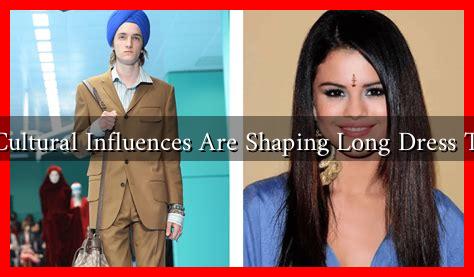-
Table of Contents
What Cultural Influences Are Shaping Long Dress Trends?
Long dresses have transcended mere fashion statements to become cultural symbols that reflect societal values, historical contexts, and individual identities. As we delve into the various cultural influences shaping long dress trends, we uncover a tapestry of factors that include globalization, sustainability, and the resurgence of vintage styles. This article explores these influences and their implications for contemporary fashion.
The Impact of Globalization
Globalization has played a pivotal role in the evolution of long dress trends. As cultures intermingle, fashion designers draw inspiration from diverse traditions, leading to a rich fusion of styles. This cross-cultural exchange is evident in several ways:
- Ethnic Patterns and Fabrics: Designers are increasingly incorporating traditional fabrics and patterns from various cultures into their collections. For instance, the use of African wax prints or Indian block prints in long dresses has gained popularity, celebrating cultural heritage while appealing to a global audience.
- Silhouette Variations: Long dresses now come in various silhouettes influenced by different cultures. The flowy kaftans of Middle Eastern origin and the structured A-line dresses from Western fashion both find their place in contemporary wardrobes.
- Fashion Weeks and Cultural Showcases: Major fashion weeks around the world, such as Paris and New York, often feature designers who highlight their cultural backgrounds, further promoting the acceptance and popularity of long dresses that reflect diverse heritages.
Sustainability and Ethical Fashion
As awareness of environmental issues grows, sustainability has become a significant influence on fashion trends, including long dresses. Consumers are increasingly seeking out brands that prioritize ethical practices. This shift is evident in several ways:
- Eco-Friendly Materials: Many designers are opting for sustainable fabrics like organic cotton, Tencel, and recycled materials to create long dresses. Brands like Reformation and Eileen Fisher are leading the charge in this area.
- Timeless Designs: The trend towards minimalism and timelessness encourages consumers to invest in long dresses that can be worn across seasons and occasions, reducing the need for fast fashion.
- Second-Hand and Vintage Shopping: The rise of thrift culture has made vintage long dresses highly sought after. Platforms like Depop and Poshmark have made it easier for consumers to find unique pieces that tell a story.
The Influence of Social Media and Celebrity Culture
Social media platforms like Instagram and TikTok have revolutionized how fashion trends emerge and spread. Influencers and celebrities play a crucial role in shaping long dress trends through their online presence:
- Influencer Collaborations: Many fashion brands collaborate with influencers to promote long dresses, often showcasing how to style them for various occasions. This has led to increased visibility and desirability of specific styles.
- Viral Trends: Social media can propel certain long dress styles to viral status. For example, the resurgence of the “boho” long dress trend can be attributed to influencers showcasing these styles at music festivals.
- Body Positivity Movement: The body positivity movement has encouraged brands to create long dresses that cater to a diverse range of body types, promoting inclusivity in fashion.
Case Studies: Long Dress Trends in Different Cultures
Examining specific cultural contexts can provide deeper insights into how long dress trends are shaped:
- India: The saree, a traditional long garment, has seen a resurgence in modern fashion, with designers like Sabyasachi Mukherjee blending traditional craftsmanship with contemporary aesthetics.
- Western Fashion: The maxi dress has become a staple in Western wardrobes, often associated with summer and casual outings. Brands like Free People have popularized this trend through their bohemian-inspired designs.
- Middle Eastern Fashion: The abaya, a long, flowing garment, has evolved into a fashion statement, with designers like Elie Saab creating luxurious versions that appeal to both traditional and modern sensibilities.
Conclusion
The trends surrounding long dresses are a reflection of the complex interplay between culture, sustainability, and modern influences. As globalization continues to shape our world, the fashion industry will likely see further blending of styles and traditions. The growing emphasis on sustainability and ethical practices will also redefine how consumers approach long dresses, favoring timeless pieces over fleeting trends. Finally, the power of social media and celebrity culture will continue to drive the popularity of long dresses, making them a versatile and enduring choice in contemporary fashion.
In summary, long dress trends are not just about aesthetics; they are deeply rooted in cultural narratives and societal shifts. As we embrace these influences, we can appreciate the rich tapestry of fashion that connects us all.
For more insights into sustainable fashion, visit Sustainable Fashion.

